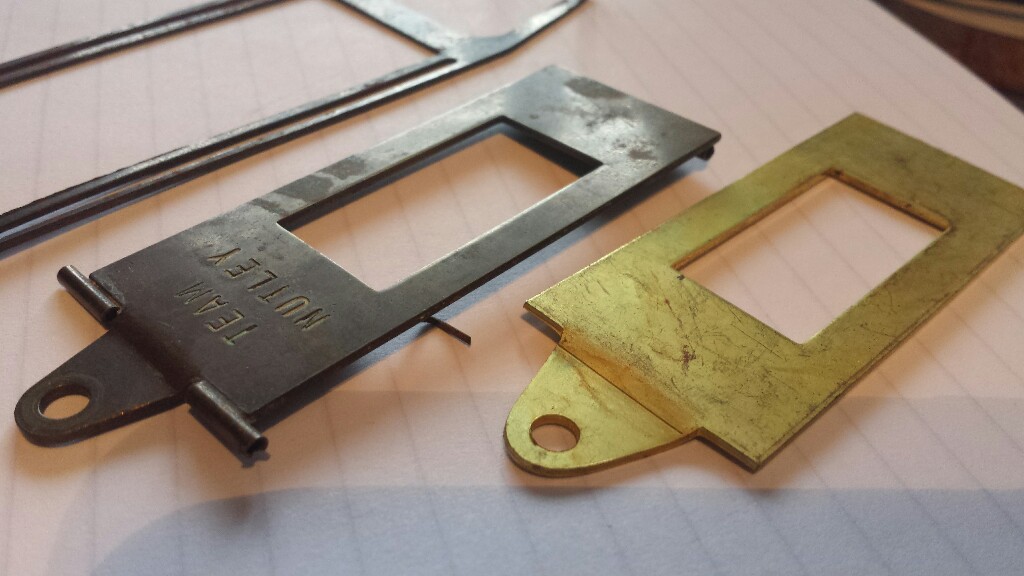Mike,
Sadly, I think you are right; the market is simply not big enough to support even a minimal order.
However, at very least the cat is out of the bag and people are thinking about ways to get this done.
For the record, here are some photos of "Cobra", Cobra equivalent, and "Nutley" drop arms:

Above is a 3/4" wide Cobra drop arm. The one in the back is a 1" wide REHCO drop arm, which was patterned after and is very similar to the Cobra. These drop arms are 1/16" thick, and were popular from mid 1968 through early 1969.

This is a 1-1/4" wide "Team Nutley" drop arm. These drop arms were available in .040" and .050" thicknesses. This one is .050".

Here's a close-up of the guide tongue. The two front edges of the drop arm on either side of the guide tongue was an ideal place to locate 3/32" plumber hinge tubes.
Aside from the Cobra drop arm being 1/16" (.063") thick and the Team Nutley drop arms being thinner at .050" and .040", there was another major difference in the way they were made. The guide tongue offset on the cobra drop arm was about 5/32" (.156") to fit thicker guides such as the ubiquitous Cox guide (now very rare and expensive). The offset on the Nutley drop arms was closer to 1/16" (.063") to fit the newer (and now universal) Jet Flag. Like this:


In my opinion, any and all drop arms made for vintage-style cars would do better to have the smaller (ie: Nutley) offset of 1/16" (.063").
The reason is we (or at least I) will not be using rare and expensive ($10 to $15 or more each) Cox guides to build my cars. Instead, I will use (cheap and plentiful) modern guides I can get anywhere. If I happen to want my modern guide to "look like" a Cox guide, all I have to do is cut it down:

Here's what it would look like compared to a real Cox guide:

Close enough for vintage-style work... 









































